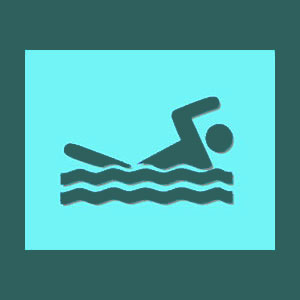
Swimming for sacroiliac pain is a great form of therapy that allows patients to exercise without having to hold up their full body weight on a compromised joint. Swimming naturally relieves the pull of gravity, taking a huge amount of pressure off the sacroiliac compared to a full weight bearing standing position more typical of most exercise activities.
Is swimming an actual treatment for sacroiliac joint pain? How can swimming benefit the joint and in what circumstances should swimming be contraindicated for patients?
This discussion will provide facts about swimming and SIJ symptoms. If you have a question related to swimming and sacroiliac pain, then this is the right dialog for you.
Swimming for Sacroiliac Pain Factsheet
Swimming is often used in physical therapy, along with other water-based activities like aqua therapy and hydrotherapy, since it allows patients to get some much needed physical activity without having to contend with gravity or impact. Swimming is one of the most efficient of all cardiovascular exercises and is well known to create a fantastic physique in regular participants.
Swimming can be performed in a physical therapy pool, a public pool, a private pool or a natural body of water, making it very versatile as a fitness activity. If the patient happens to have easy access to a pool, lake or ocean, swimming can be a great activity that is free of charge or low cost, making it ideal for self-managed care plans and patients with limited financial means available for professional treatment.
Swimming is vigorous, yet is a very gentle form of exercise that is largely considered constructive and non-damaging to the body. Obviously, some strokes and techniques are better suited to some patients than others. Most sacroiliac joint pain sufferers will need some trial and error to discover which swimming techniques might benefit them and which might prove detrimental to their pain. Since swimming does not involve weight bearing on the joint, there really are no strokes which should be universally beneficial or detrimental, but each patient should try a variety to strokes to see how each influences their pain.
Swimming Benefits for SIJ Pain
Swimming provides a terrific full body workout. It builds muscle through resistance training and provides a great cardiovascular exercise activity. Swimming is a nonimpact and non-weight bearing activity, making it perfect for patients with sacroiliac pain or any type of joint pain.
As far as specific benefits for sacroiliac joint pain, swimming can provide the following rewards:
Swimming might be an important part of rehabilitation following joint surgery or joint injury. Swimming remains one of the most widely used physical therapy practices for people with sacroiliac joint pain problems.
Swimming can help to increase circulation to a compromised joint, helping to speed up organic healing.
Swimming is rarely painful to people with sacroiliac joint pain, allowing them to relax and enjoy the activity rather than face pain during their therapy sessions. In fact, many patients cite that their time in the gravity-free environment of the pool is the least symptomatic time of their day.
Swimming for Sacroiliac Pain Downsides
Swimming is not ideal for all patients and certainly demonstrates some distinct downsides compared to others forms of therapy, including any or all of the following applicable factors:
Not all patients have access to swimming facilities, although this is rare. Most people do have access to some facility where they can swim safely. For some patients, cost might be a factor, but this can be overcome by swimming in a cost-free environment, like a natural body of water, when available.
Not everyone can swim. Some people are actually terrified of being in the water. Of course, patients can still walk in the water and gain some benefit, but this will only decrease the load on the joint and not remove it completely. However, water-walking is also a great activity for patients who are working to rebuild strength in a compromised or postoperative joint.
Swimming can not usually be used as a therapy immediately following sacroiliac surgery until the surface incisions have completely closed.
Swimming might cause pain for some patients, particularly those who have been misdiagnosed with sacroiliac joint pain.
Sacroiliac Joint Pain > Sacroiliac Exercises > Swimming for Sacroiliac





